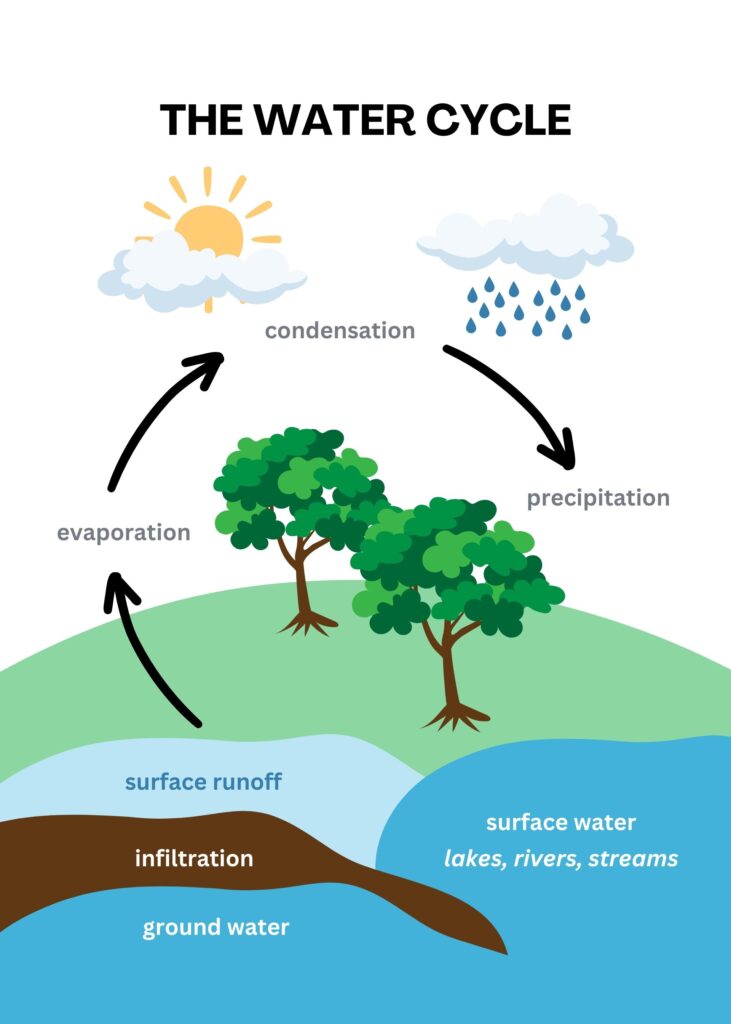- Evaporation:
- Water from oceans, lakes, and rivers, as well as from plants and other surfaces, turns into water vapor through a process called evaporation. This happens when the sun’s heat turns liquid water into invisible water vapor in the air.
- Rising Air:
- When the sun heats the Earth’s surface, the air above it gets warm. Warm air rises because it becomes lighter. As the warm air rises, it carries the water vapor with it.
- Cooling and Condensation:
- As the warm air rises higher in the atmosphere, it encounters cooler temperatures. Cooler air can’t hold as much water vapor as warm air, so the water vapor starts to turn back into tiny water droplets. These tiny droplets come together to form a cloud.
How Rain Happens:
- Growing Clouds:
- Clouds are made up of tiny water droplets or ice crystals. These droplets and crystals keep joining together and growing inside the cloud.
- Heavy Clouds:
- When the cloud becomes heavy with water droplets, it can’t hold them all. Gravity pulls the water droplets downward.
- Rainfall:
- The tiny water droplets join together and form larger drops. When these drops become big enough, they fall to the ground as rain. If the temperature is very cold, the drops may freeze into ice pellets or snowflakes instead.

Fun Fact:
- Sometimes, clouds form at ground level, and we call them fog. Fog is like a cloud that’s close to the Earth’s surface.
In summary, clouds form when warm air rises, carrying water vapor with it. As the air rises and cools, the water vapor turns into tiny droplets, creating clouds. Rain happens when these droplets in the cloud combine and become heavy enough to fall to the ground. This process is an essential part of the Earth’s water cycle.


No responses yet